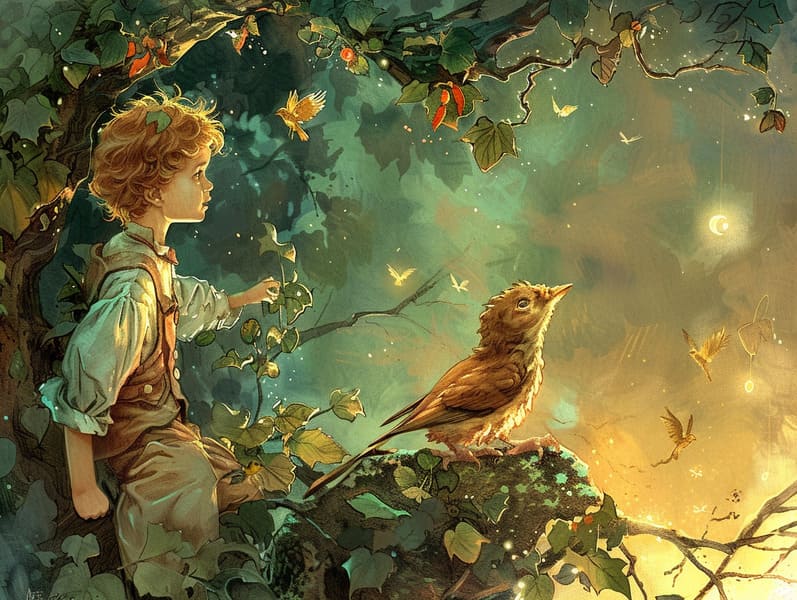
Vintage fairy tales have enduring presence. These tales have been relayed from one generation to the next ages before they were ever documented. They emerged from a variety of traditions, including Asian traditions. They were initially told among grown-ups, often carrying themes and messages reflective of the societal norms and beliefs of the time.
Jacob and Wilhelm Grimm, Jacob and Wilhelm Grimm, were among the first to compile and publish many of these beloved narratives. Their published works, "Grimm's Story Collection," included classics like "Cinder Maid," "Hansel and Gretel," and "Schneewittchen," which have since become essentials in the world of children's fairy tales. Similarly, Hans Andersen's delightful fairy tales, such as "The Little Mermaid," and "The Duckling that Could," have floated into hearts worldwide, establishing their place in the pantheon of iconic fairy tales.
Even though they are old, these tales remain as pertinent as ever, especially as bedtime stories for kids. These magical stories are now available in different formats, including beautifully illustrated books, charming animations, and digital storybooks.
Their lasting presence can be credited to several whimsical characteristics:
Ethical Lessons: Old fairy tales often offer important moral lessons. Tales like "The Tale of the Boy Who Cried Wolf" teach the merit of being truthful, while "The Race of the Tortoise and the Hare" demonstrate the merits of steadfastness and meekness. These narratives offer young ones clear distinctions between moral and immoral, molding their moral compass in a subtle yet profound way.
Kindness and Comprehension: Traditional fairy tales frequently illustrate heroines facing challenges and problems, inciting readers to relate with their struggles and cheer for their triumphs. For instance, "The Tale of Beauty and the Beast" conveys the benefit of looking deeper to recognize the inner being of a character, cultivating perception and recognition.
Cultural Insights: Many ancient fairy tales are steeped in the cultural contexts from which they bloomed. Delving into these tales can provide fascinating glimpses into different heritages, enhancing a sense of world respect and comprehension.
Creativity and Fantasy: The fantasy-filled elements in ancient fairy tales—mythical creatures—promote children’s inventiveness. These stories lead readers to extraordinary realms, generating innovative dreams and a sense of wonder that remains a lifetime.
Classic fairy tales are not only fantastical but also illuminating. They act as bewitching tools in developing various cognitive and affective skills in young ones. When fairy tales are told out loud, they develop language acquisition by bringing new linguistic elements and sophisticated sentence structures. This practice also develops auditory perception and attentiveness, as young readers follow the story, enthusiastic to see what happens next.
Furthermore, exploring the themes and characters of old fairy tales can cultivate evaluative skills and reasoning skills. Young readers learn to find patterns, anticipate outcomes, and get cause and effect. These reflections also contribute to young ones utter their thoughts and feelings, promoting their emotional intelligence.
In today’s technological age, the accessibility of internet fairy tales has made these fairy tales more obtainable than ever. Online resources and digital apps provide huge assortments of traditional fairy tales that can be accessed or listened to anytime, anywhere. Fairy tales read aloud are particularly prevalent, offering an enjoyable way for kids to take part in these alluring stories. Read-aloud stories and voiced videos lead characters and settings to life, often augmented by mesmerizing music and melodies that amplify the tale-telling adventure.
The enduring charm of traditional fairy tales lies in their ability to change to today's society while keeping their central messages. Contemporary retellings of these tales often incorporate more inclusive characters and modern settings, making them pertinent to today’s audience. However, the main ideas of fortitude, sympathy, and righteousness remain unchanged, continuing to affect young listeners of all ages.
Fairy tales also offer a sense of assurance and closeness. They afford a structured narrative with a obvious beginning, middle, and end, often winding up with the termination of conflicts and the triumph of righteousness over wickedness. This constancy can be calming for children, affording a sense of constancy in an inconstant world.
Timeless fairy tales continue to fascinate and educate new generations, maintaining their wonder and relevance in modern society. As nighttime stories for kids, they impart upon a perfect blend of charm and enlightenment, sustaining moral values, empathy, and creativity. The proliferation of digital storybooks and the favor of fairy tales recited ratify that these timeless fairy tales remain reachable to new generations.
By preserving and passing on these narratives, we continue to treasure the rich tapestry of legends and cultural heritage. Whether you are seeing a vividly illustrated book, accessing a cyber collection, or listening through an narrated book, read more the grandeur of Grimm's fairy tales is always within reach. These narratives illustrate of the endless force of narratives and its ability to connect us across time and space.
No matter if you are exploring a beautifully illustrated book, accessing a virtual collection, or playing an audio story, the wonder of traditional fairy tales is always within reach.
These fairy tales illustrate of the everlasting strength of tales and its ability to draw us together across generations and cultures, forging a link that delights and instructs alike.